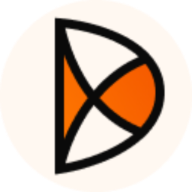Why It's Called A 'Wiki'
In 1994, seven years before he would coauthor the Agile Manifesto, Ward Cunningham came back from a trip to Hawaii with his wife and a stroke of inspiration.

In 1994, seven years before he would coauthor the Agile Manifesto, Ward Cunningham came back from a trip to Hawaii with his wife and a stroke of inspiration.
For months, Cunningham had been working on a project to make it easier for people to write articles on the web. See, back in the mid-90s, the internet was starting to be adopted by the masses. More people were getting access to modems, and internet browsers like Netscape were making it fun to "surf the net". However, publishing on the internet was still a really difficult challenge that required a fair amount of technical knowledge.
So, Cunningham wrote a program that would allow anyone to quickly edit and create pages on a website; and I mean anyone. Any user could go to a page, add some information, and save it. If they wanted to create a new page, they could. They could even create pages by creating links that didn't go anywhere. If the program detected a link to a page that didn't exist yet, it would make one so people could start adding content immediately.
When he took his trip to Hawaii, he'd already been using this system to run The Portland Pattern Repository - a website where he and a community of other developers documented the growing number of programming patterns.
So, the inspiration Cunningham was searching for was not about how to make the system work; it was about what to call it. And as he boarded the Wiki-Wiki shuttle bus that would take him to the Honolulu airport, he found it.

The WikiWikiWeb launched in 1995. Since then, the "wiki" website pattern has become so popular - powering some of the most visited sites in the world like Wikipedia, wikiLeaks, and wikiHow - that the true definition of the Hawaiian word for quick is now second in the dictionary.
When he published the program, Cunningham had no idea the transformative impact it would have on the web. In fact, he wasn't even sure what he created:
Wiki is a composition system; it's a discussion medium; it's a repository; it's a mail system; it's a tool for collaboration. We don't know quite what it is, but we do know it's a fun way to communicate asynchronously across the network.
- Ward Cunningham, 1995
So, how did the wiki go from this revolutionary, collaborative, "fun" communications tool to the stale, disorganized, and useless mess each of us has at our companies?
That's what I'm going to explore in an upcoming series of blog posts on the wiki. I'm going to discuss common problems like: How to Organize a Company Wiki, Why People Aren't Writing in Your Wiki, and What to Look For in a Wiki.
My hope is that by approaching these questions with a tool-agnostic communication and knowledge management perspective, we can all regain the promise of the wiki as a central, collaborative, communal knowledge base that keeps us all on the same page.
If you'd like to be notified when those posts come out, you can sign up for my newsletter, Realizing Thought. Every Wednesday, I share my latest essay along with 3 pieces that inspired me that week related to communication, creativity, and and collaboration. You can click here to sign up and subscribe for free.
Until next time.
